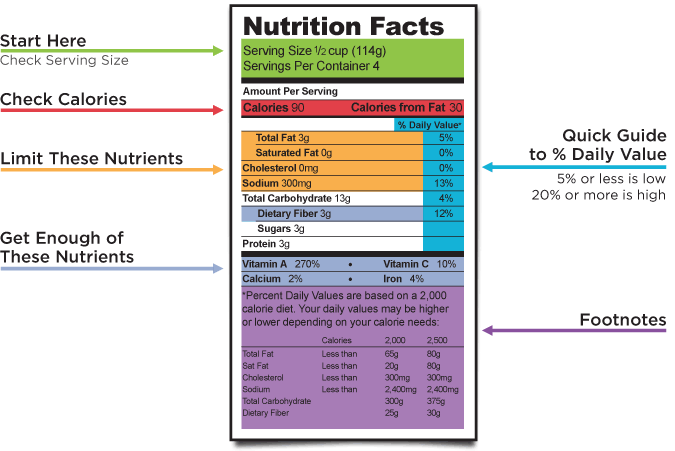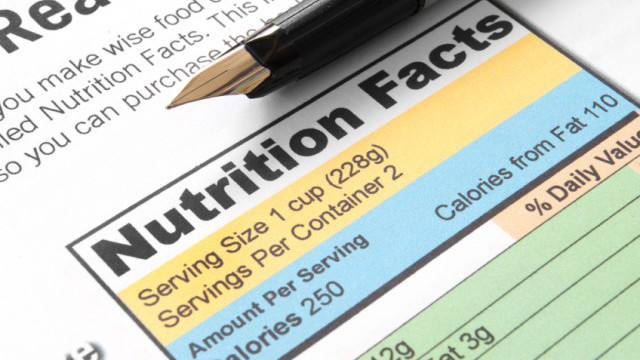By: Dianna Yanchis, BSc (Nutrition) Candidate
Reviewed by Andrea Miller MHSc, RD
Grocery shopping can be a very overwhelming experience for many of us! With so many aisles, millions of food products and so much confusing nutrition information to navigate through! To make healthier food choices to achieve overall good health, understanding nutrition labels is very important.
In Canada, nutrition labeling became mandatory for all prepackaged foods in December of 2007. Food labels are designed to provide consumers with the information they need to make healthier food choices.. This article will help you to understand how to read nutrition labels by explaining the meaning behind the numbers and what you can look for on the label, when trying to make healthy choices.

STEP 1: Serving size. The first thing you should look at and keep in mind while reading the other facts is the serving size. It is important to realize that the serving size given may not be the same as one serving according to Canada’s Food Guide and it may also not be the same as the amount you eat. Therefore, you must factor in how much of the food you eat, when determining the amount of nutrients that this food contributes to your actual intake. For example, if you think you would eat twice as much as the given serving size, remember to multiply all of the other values by 2.
STEP 2: Calories. Calories provides a measurement of how much energy you get from a serving of this food.
STEP 3: Percent daily values. The percent daily value tells you how much a serving of food contributes to your overall intake of the various nutrients listed on the label. The percentages are based on recommendations for a healthy adult 2000-calorie diet. Foods that contain less than 5% DV of a nutrient are considered low in that nutrient, while foods that contain more than 15% DV are considered high in that nutrient. For example, if you are trying to consume lower-fat foods, selecting foods that contain less than 5% of the fat DV will help you reach your goals. By comparing the %DV between foods for any nutrient, you can quickly decide which food is higher or lower in that nutrient.
STEP 4: Specific nutrients. It is important to know which nutrients we should limit from our diet and which nutrients we should consume more of. Some nutrients that we already consume in high amounts should be limited. These nutrients are fat, saturated fat, trans fat, cholesterol, and sodium as they may increase your risk of certain chronic diseases, like heart disease, some cancers, or high blood pressure. In contrast, some people do not consume enough dietary fiber, vitamin A, vitamin C, calcium, and iron in their diets. These are the nutrients we want to consume more of. Eating enough of these nutrients can improve your health and help reduce the risk of some diseases and conditions.
I hope you have learned how to better read nutrition labels and make grocery shopping for nutritious foods much easier! For more information and interactive tools on reading nutrition labels visit: http://www.hc-sc.gc.ca/fn-an/label-etiquet/nutrition/index-eng.php


